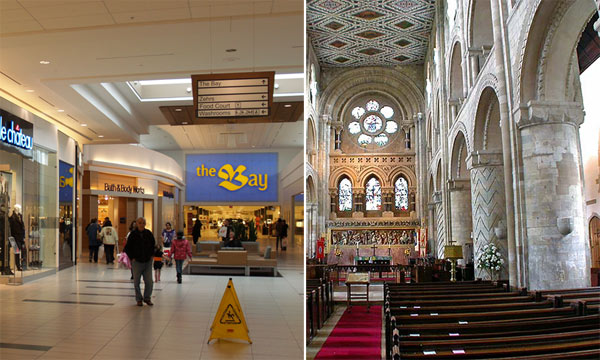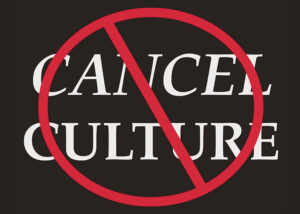After many hours of methodical and systematic doubting of all that he held certain, seventeenth-century French philosopher Rene Descartes came to an astounding conclusion: the only thing that he could know for certain, beyond any reasonable doubt, was that he was a thinking creature. His famous dictum, “I think, therefore I am,” ostensibly gave him a foundation upon which to build all subsequent knowledge. Descartes’s rather drastic, rationalistic notion of human persons—of what human beings essentially are—is still prominent in many parts of our culture today. That is, to a great extent, it is still popular to think of human beings as primarily and fundamentally “thinking things.”
Philosopher James K. A. Smith appropriately describes this view as the “bobble head” view (Desiring the Kingdom: Worship, Worldview, and Cultural Formation, 2009). Human identity or human essence—the very definition of what it means to be human—is wrapped up in what we think. In an important sense, in this view the centre of our being is in our heads; we are bobble heads.
However, there is a critical problem with this view of persons: it doesn’t seem to be true. We are not primarily thinkers or primarily driven by rational thought processes. Our identities are not primarily wrapped up in what we know or even what we believe. In the last few decades, psychologists, neuro-scientists, and psychoanalysts (among others) have shown that conscious, deliberate, rational thought only accounts for a tiny fraction of our brain activity or the profusion of individual tasks that we accomplish throughout any given day. (See for example David Brooks, The Social Animal: The Hidden Sources of Love, Character, and Achievement, 2011). They have “rediscovered” a much more ancient way of looking at human beings, a much more pre-cognitive one.
To be clear, this is not to denigrate rational thought in any way. But it is an attempt to push against a fundamentally rationalistic view of persons because it does not seem to fit with our everyday reality or with modern psychology and it does not fit with the Biblical view of persons.
My contention, following a long and rich Christian tradition, is that human beings are primarily “lovers” or “desiring beings.” If I really want to get to know someone or what drives and motivates them, I do not want to know what they think. While that has some value to be sure, what I really long to discover is what they want, what they desire above all else, what they long for.
What we fundamentally desire is what primarily defines who we are and what we are aiming toward as persons. This is what Jesus referred to when he repeatedly described the “heart” as the primary motivator of action. These ultimate loves, the affective core of our being, includes what is often referred to as our “character.” So instead of centering our human identity—our true humanness—in our heads (in what we rationally think), it is centered in our hearts (in what we love) because what we love determines who we are and what we strive for as persons. One could sum up this view of persons with the motto. “I am what I love.”
What this means is that we are fundamentally dynamic, driven, longing, and desiring beings. We all have ultimate loves that are always aimed toward something, toward what the Greeks called a telos. And these ultimate loves are what constitute our identity and life trajectory. All persons have ultimate desires or longings whether they are aware of them or not, because they function at a non-cognitive or perhaps pre-cognitive level. Our ultimate loves are formed deep inside of us, in the very core of our being, from when we are born.
Perhaps it is worth noting that this is not a reference to trivial loves like a love for coffee or sunshine or even a specific person (although these “trivial” loves will all be determined by our ultimate loves). To quote James Smith here, “Rather, we are talking about ultimate loves—that to which we are fundamentally oriented, what ultimately governs our vision of the good life, what shapes and molds our being-in-the-world—in other words, what we desire above all else, the ultimate desire that shapes and positions and makes sense of all our penultimate desires and actions” (Smith, Desiring the Kingdom). In other words, our ultimate loves propel and compel us to act or refrain from acting in certain ways.
The fundamental structure of human beings is as these kinds of desiring and loving beings; beings that are oriented toward some vision or picture of what we take to be the good life. In other words, we are aimed at and striving toward some kind of picture, whether good or bad, of human flourishing. There are pre-cognitive, affective forces that drive, motivate, and shape us into who and what we become. Because our loves usually function at a pre-cognitive level, we are often not fully aware of them or able to articulate exactly what they are. There is a gap, in a sense, between what we think and what we love because we know what we should love or what end we should be aiming toward but it often remains a cognitive process. We do not actually reshape our loves to line up with our cognitive processes.
If this is true, then how are our ultimate loves shaped? The way that our ultimate loves are shaped is through practices that, over time, become formative habits. The practices that we participate in, whether consciously or unconsciously, shape and form us into certain kinds of people. Our formation as persons, as desirers or lovers, is shaped on a daily basis by practices and habits that shape and alter what we are striving for. Every practice has a certain telos or end out of which it is born and it consequently shapes its participants toward that telos.
In this picture of human persons, “culture” is then defined as a set of practices that, over time, shape our ultimate loves. In other words, culture is something that we do; it is something that we participate in and it is aimed at a specific end—a specific vision of human flourishing. Every facet of culture has an underlying vision of what the good life looks like. A culture like ours can be seen as a multifarious conglomeration of practices that are born out of diverse (and often competing) visions of human flourishing. That is why, as Smith notes, culture functions as a kind of liturgy. The term liturgy simply refers to a set of practices that form and shape our ultimate loves. Cultural practices, as a kind of liturgy, define our ultimate goals. This is how liturgy is understood in the historical and religious sense of the word as well. Liturgy, in a church setting, is a formative set of practices that ultimately define for us who we are and what we are about—what we are aiming toward. Culture also functions as a formative liturgy.
What this means is that there is no such thing as a culturally neutral space. There are no value-free institutions or cultural practices. Economics, politics, social science, art, music, theatre, retail, education and so on, are all wrapped up in some vision of the good life. Put another way, every aspect of culture has an implicit picture of what it means for human beings to flourish (Charles Taylor, A Secular Age, 2007). Although these images are usually implicit and often difficult to articulate, they are still there, shaping people to specific visions of flourishing. However, when one begins to see culture in this way, one can often hear echoes of what those underlying visions look like.
Let us take a contemporary example of a shaping cultural practice or secular liturgy: a contemporary shopping mall (Smith, Desiring the Kingdom). A shopping mall is not merely a neutral space where one can go and buy goods. Rather, it is a charged space with certain rituals or liturgies that, over time, are formative and, over time, birth in us certain ultimate loves or longings—a certain picture of what human flourishing looks like. And to a great extent, this liturgy is deeply antithetical to the kingdom of God.
To start, one can immediately notice great similarities between the North American shopping mall and the great cathedrals of Europe. In many ways the mall is a kind of secular cathedral, a culturally formative place with rituals and liturgies. For example:
- Basically every mall tries to reconfigure the way that persons normally inhabit space and time. The layout of malls invites its entrants on an existential journey to happiness. Have you ever seen a mall with windows (other than skylights)? Probably not. There is an intentional shutting out from the outside world.
- Have you ever noticed that most malls have a confusing, labyrinth-like layout? This is also intentional. A mall is designed for maximum peripatetic effect. Not only is one shut out from the everyday reality of the outside world but one is supposed to wander around aimlessly or at the very least be forced to walk excessive mileage and, in the meantime, be unintentionally drawn to enter more stores.
- To add to the reconfiguring of our everyday reality, it is almost impossible to find a clock anywhere. This is also not an accident. One is not supposed to be constantly aware of time when entering this cathedral.
- The mall has a liturgical calendar: Mother’s Day, Valentine’s Day, Christmas, Easter, Halloween etc. There is an ebb and flow to the calendar year in the mall as it is devoted to different holy days.
- The mall is lined with 3D icons (manikins) that point toward a perverted vision of what true human flourishing looks like.
- The mall does outreach (which we call advertising). Ads are really just a bunch of compressed, powerful little narratives that envision the good life for us if we will only buy a specific product.
The purpose of this extended example is to point out that when we begin to see culture as a kind of formative liturgy, then we can begin to see where cultural practices are pointing. More importantly, we can see the formative impact of cultural practices as we participate in them. We do not really care what the mall thinks or believes because we do not go to the mall for a theoretical defense of free market capitalism. But when we go to a mall, we are impacted by images that consequently shape our desires. Malls are all about drawing people into a formative set of practices that shape them into certain kinds of people.
If this is true and we are in fact fundamentally loving and desiring beings and not primarily rational beings, then following Christ is first and foremost about a transformation of our loves or our characters. In the language used earlier, it is about aligning our loves or desires to a proper telos or end. In other words, being a follower of Christ is not primarily about following some abstract rules that are imposed on us after deciding to become a Christian or about praying a prayer of repentance. It is not even primarily about thinking the right things. Of course, these things are all important to an extent. But the primary role of the church is to cultivate certain kinds of people; people that are aimed toward the true human telos.
Consequently, we, as the church, need to develop practices that are character-forming and that point toward our proper end. Unsurprisingly, Scripture repeatedly describes the nature of being a Christ-follower in just these terms. It speaks of a transformation of our longings and our characters so that the foremost desire that guides all our action is to see the restoring and loving rule of God on earth, literally, “God’s kingdom come on earth as it is in heaven.” And in numerous passages—like Genesis 1, Matthew 5, and Galatians 5—we have images of what the reconciling and loving character of God looks like—what the kingdom is all about. We need practices—real, tangible, habitual actions—that will both show the world what story we are part of and also form us into better actors in that story.
In conclusion, when we think of human persons primarily as thinking things, we end up undermining the core of who we are. We see our primary role as people that need to think properly. To reiterate, thinking properly is certainly important and a vital part of living a holistic life of integrity. But we are primarily transformed by formation not by information. Formation and information are not mutually exclusive categories to be sure; they complement one another to an extent. Yet, we are primarily shaped by our practices—what we do from minute to minute throughout the day. As followers of Christ, and through the Holy Spirit, we need to immerse ourselves in practices that point toward the end for which we were intended so that our ultimate longings and our characters will be transformed to reflect true humanness.
This also means that we need to be aware of the formative nature of culture. Culture shapes and molds our ultimate loves. Cultural practices change our characters over time. Our culture, like all cultures, is a charged space of competing visions of human flourishing. Every person and every society lives by some conception of what constitutes human flourishing. Although there are many distorted notions of human flourishing all around us, our calling is not to seclude ourselves from the “outside world” but to refuse to buy into the distorted pictures of what a true human end looks like. Using the apostle Paul’s language in his letter to the Romans, we are not to be conformed to the world but transformed. It is through the transformation of our characters that we bear witness to the character of Yahweh as seen in Jesus Christ.
Carl is a graduate student at Regent College in Vancouver. This is from a sermon he preached at Point Grey Inter-Mennonite Fellowship, Vancouver, on Sept. 2, 2012.









Leave a Reply
You must be logged in to post a comment.